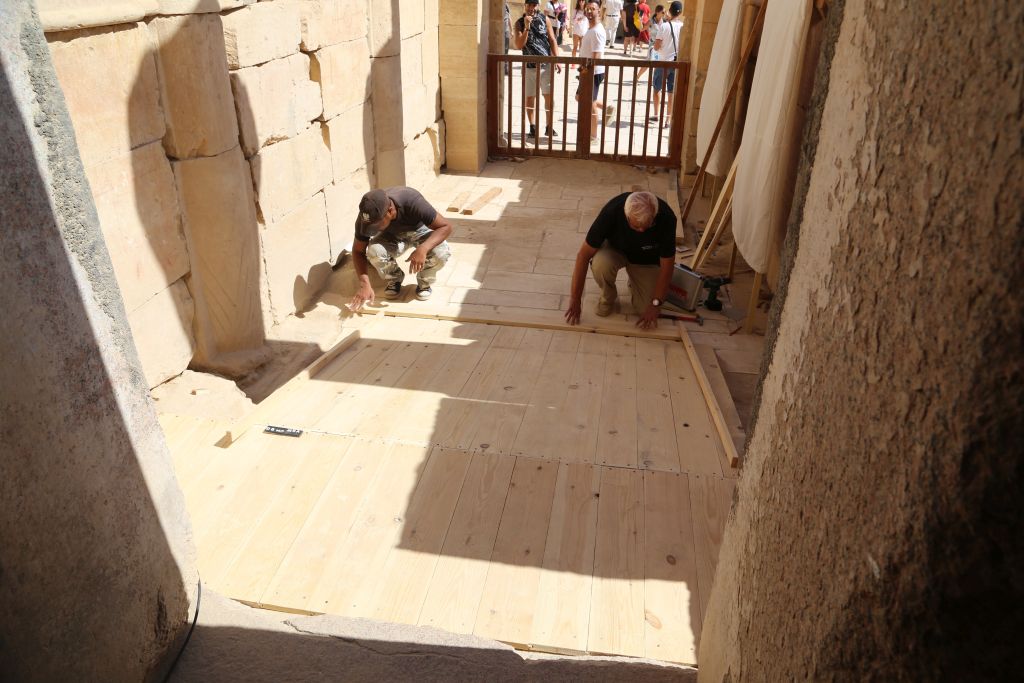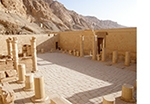News
News

|
Merry Christmas and A Happy New Year!Polish Mission in the Temple of Hatshepsut wishes you Merry Christmas and A Happy New Year! |
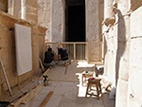
|
Preparations for the opening of new parts in the templeConstructing works are undertaken to prepare new parts of the temple to be open for visitors - Ptolemaic Portico and Main Sanctuary of Amun. Engineer Mieczysław Michiewicz together with Sayed Tg and rais Ragab Yaseen are constructing the platform above the entrance to the main sanctuary. The opening of the new visitor's path is scheduled for the beginning of December 2017.
More photos are on Missions's Facebook page - HERE. |
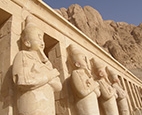
|
Winter season of 2017 has already begun!Winter season 2017 in the Temple of Hatshepsut has already been started on October 11, 2017. Works during this season will be dedicated mainly to the comprehensive documentation of the Upper Courtyard, Northern Room of Amun and Punt Portico. It is planned to supplement the documentation, both drawings and photographs, and to perform 3D scanning. In addition, projects related to Hatshepsut Mission will be continued - works in the necropolis of northern Asasif and in the magazine with blocks from Tuthmosis III temple. Winter season of 2017 will last until mid-December. Follow us on Facebook to get more info about the work progress. |
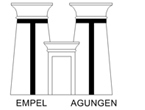
|
Members of Hatshepsut Mission at conferences in May 2017Several members of Hatshepsut Mission will present their research at international conferences in May 2017:
Current Research in Egyptology, Naples, 3-6 May: F. Taterka, Hatshepsut’s Punt Reliefs: Their Structure and Function
Abstract can be found HERE.
K. Kapiec, Alterations in the Relief Decoration in the Southern Room of Amun in the Temple of Hatshepsut at Deir el-Bahari
Andrzej Ćwiek, Hatshepsut or There and Back Again. Between the Tomb and the Temple Mirosław Barwik, Building the temple “to the north of the royal tomb” — ostracon Deir el-Bahari F.8941 Zbigniew E. Szafrański, Temples providing a focal point for graves in the Theban mortuary landscape
Abstracts can be found HERE. |
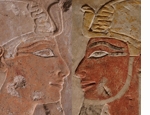
|
Distinction for Ph.D thesis by Marta SankiewiczWe are pleased to inform that Ph. D. thesis "Iconography of Hatshepsut and Tuthmosis III in the Temple of Hatshepsut at Deir el-Bahari as a reflection of the relationship between both rulers" by Marta Sankiewicz was awarded a distinction in the XIIth contest for the best Ph. D. thesis organised by National Centre for Culture in Poland. Congratulations!
More info (in Polish) can be found HERE. More info about the Dr. M. Sankiewicz's project can be found HERE. |
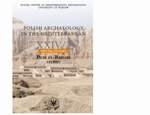
|
Deir el-Bahari Studies IWe are pleased to inform that the first volume of Deir el-Bahari Studies series has just been published as a Special Studies fascicle of the PCMA journal Polish Archaeology in the Mediterranean 24. As Dr. Z.E. Szafrański states in the preface - "Articles are covering manifold aspects of human cognitive behavior in the Deir el-Bahari and Asasif area. They range widely in space and time, being aimed at studies of particular periods or problems, rather than general theoretical statements. In future special issues of Deir el-Bahari Studies contributions from specialists in complementary fields, such as architecture, conservation or linguistics will also be encouraged. This broad scope of the presentation will hopefully be appreciated by all those concerned with the archaeology and restoration of West Theban monuments".
All articles are available online on the PCMA website and can be downloaded HERE. |







